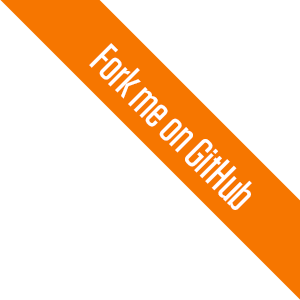Owin 自定义中间件(2)中间件进阶
前面一篇文章简单的介绍了中间件的应用
下面编写一个自定义的中间件类库,并加入中间件参数以及引入日志记录中间件的异常
下面来看下中间件的构造,参数可以自定义 这里我定义了一个参数类
编写中间件需要引入
Owin
Microsoft.Owin;
中间件类需要继承类:OwinMiddleware

/// <summary> /// 自定义的中间件 /// </summary> public class CustomMiddleware : OwinMiddleware { CustomMiddlewareParameters _parameter; public CustomMiddleware(OwinMiddleware next, CustomMiddlewareParameters parameter) : base(next) { _parameter = parameter; } public override Task Invoke(IOwinContext c) { if (Next != null) { try { var cookie = c.Request.Cookies.ToList(); string allcookie = string.Empty; string allenvi = string.Empty; foreach (var cok in cookie) { allcookie += cok.Key + "---------------" + cok.Value + "<br />"; c.Environment.Add(cok.Key, cok.Value); } foreach (var envi in c.Environment) { allenvi += envi.Key + "---------------" + envi.Value + "<br />"; } var msg = Encoding.UTF8.GetBytes(allcookie + "<br /><br /><br /><br /><br /><br />" + allenvi); c.Response.ContentType = "text/html; charset=utf-8"; c.Response.Write(msg, 0, msg.Length); //处理操作 return Next.Invoke(c); } catch (Exception ex) { _parameter.logs.Error(ex.Message); } } return Task.FromResult<int>(0); } }
这里我获取了cookies 以及 设置或获取 IOwinContext上下文中的环境变量,那么这里就可以搞事情了
我可以处理cookies 添加设置环境变量中的值 或者根据Request Response中的做处理,或者这个中间件做一些事情 另外其他中间件来搞事情,但是要注意中间件引用的顺序
下面看下我的参数类:CustomMiddlewareParameters

public class CustomMiddlewareParameters { public ILog logs { get; } public string siteName { get; set; } public LYMOptions lymOptions { get; set; } public CustomMiddlewareParameters() { log4net.Config.XmlConfigurator.ConfigureAndWatch(new FileInfo(AppDomain.CurrentDomain.BaseDirectory + "Log4Net.config")); this.logs = LogManager.GetLogger("CustomMiddlewareParameters"); this.lymOptions = new LYMOptions(); } internal void Validate() { if (siteName == null) { throw new ArgumentException("参数siteName不能设置为Null"); } if (lymOptions == null) { throw new ArgumentException("参数cookieOptions不能设置为Null"); } } }
参数里面可以引入更多的参数,看实际业务需求,这里我随便定义了一些,同时这里可以验证参数等操作,我写了几个异常未来抛出日志
这里日志我引入了Log4.Net 包 当然也用可以用其他的 包括自己写一些
做好这一步,那么我来写一个扩展类 扩展IAppbuilder

public static class CustomMiddlewareExtentions { public static IAppBuilder UseLYMMiddleware(this IAppBuilder builder, CustomMiddlewareParameters customParmeters) { try { customParmeters.Validate(); builder.Use<CustomMiddleware>(customParmeters); } catch (Exception ex) { customParmeters.logs.Error(ex.Message); } return builder; } }
可以捕获一些异常情况,这句是中关键件的关键 builder.Use<CustomMiddleware>(customParmeters);
CustomMiddleware 为自定义的中间件类,参数为 params object []
到这里中间件基本就写好了
下来就是用:
在Web应用中引用 Microsoft.Owin.Host.SystemWeb
在Web寄宿类中添加 中间件引用就ok了
app.UseLYMMiddleware(new CustomMiddlewareParameters());
这里我没有添加参数 会报错,查看日志的生成情况,这里需要配置下日志的XML

检查下日志已搞定
接下来看下正常情况是什么,中间件里面我输处理日志信息 以及 中间件环境变量信息


下面看下上面的信息,在中间里面就可以搞事情了比如:参数相关,中间件上下文对象都封装有这个IOwinContext对象

接下来看下这个中间件里面的参数

// // 摘要: // Gets the Authentication middleware functionality available on the current request. // // 返回结果: // The authentication middleware functionality available on the current request. IAuthenticationManager Authentication { get; } // // 摘要: // Gets the OWIN environment. // // 返回结果: // The OWIN environment. IDictionary<string, object> Environment { get; } // // 摘要: // Gets a wrapper exposing request specific properties. // // 返回结果: // A wrapper exposing request specific properties. IOwinRequest Request { get; } // // 摘要: // Gets a wrapper exposing response specific properties. // // 返回结果: // A wrapper exposing response specific properties. IOwinResponse Response { get; } // // 摘要: // Gets or sets the host.TraceOutput environment value. // // 返回结果: // The host.TraceOutput TextWriter. TextWriter TraceOutput { get; set; } // // 摘要: // Gets a value from the OWIN environment, or returns default(T) if not present. // // 参数: // key: // The key of the value to get. // // 类型参数: // T: // The type of the value. // // 返回结果: // The value with the specified key or the default(T) if not present. T Get<T>(string key); // // 摘要: // Sets the given key and value in the OWIN environment. // // 参数: // key: // The key of the value to set. // // value: // The value to set. // // 类型参数: // T: // The type of the value. // // 返回结果: // This instance. IOwinContext Set<T>(string key, T value);
Authentication:授权相关
Environment:上下文环境值 IDictionary<string, object> 这个类型
OwinRequest Request :封装的请求对象
IOwinResponse Response 请求的响应对象
以及一个 Get Set 方法 这是设置 OWIN environment中的值
还有对输出处理 TraceOutput
中间件想一个生产企业的流水线一样,一次请求过来 经过流水线(不同的中间件)加工处理,最后到生产出产品就相当于网页的Reponse响应
如果您觉得阅读本文对您有帮助,请点一下“推荐”按钮,您的“推荐”将是我最大的写作动力!
本文版权归作者和博客园共有,来源网址:http://www.cnblogs.com/liyouming欢迎各位转载,但是未经作者本人同意,转载文章之后必须在文章页面明显位置给出作者和原文连接。




